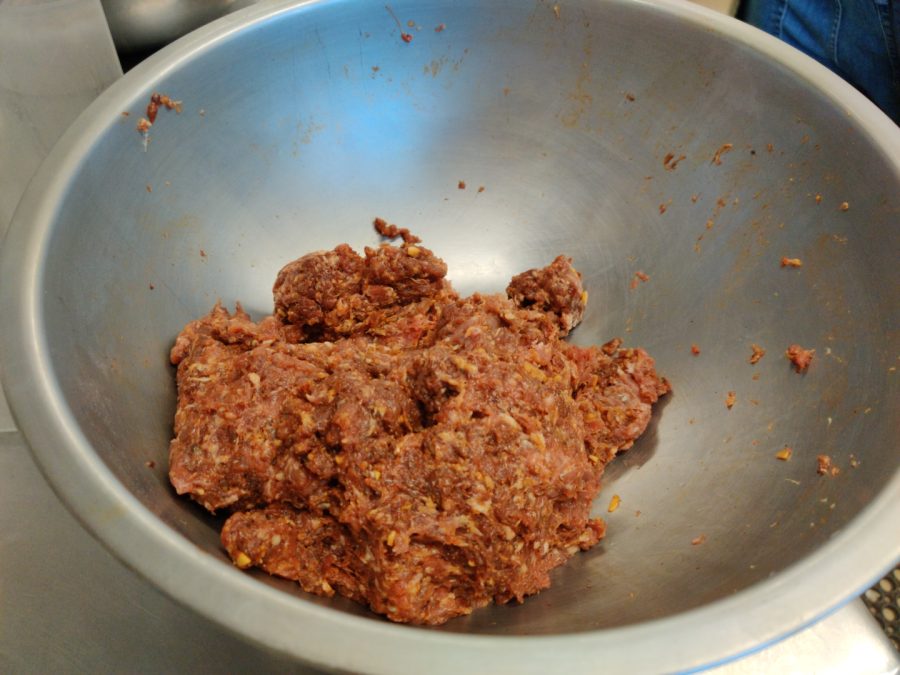Culinary links with chef Lee
Executive chef Kevin Lee taught culinary students how to make fresh sausages.
November 8, 2021
The idiom “how the sausage gets made” usually connotes revealing something unpleasant about a process–such as law-making. This was not the case last week in Lars Mitsuda’s culinary lab class, where the sausage was, literally, made. And deliciously at that.
Kevin Lee, owner and executive chef of upscale restaurant PAI in downtown Honolulu, visited Moanalua High School for two days, demonstrating to students how to grind pork and make sausage. Lee discussed how different plates in the meat grinder created different degrees of coarseness. For sausage, it’s best to grind the meat coarsely at first and then run it through the machine again to make it finer.
Students passed around samples of the different grinds of meat, taking pictures and noting the textural differences.
Mitsuda ushered the students into the kitchen, gathered them around a bowl of previously ground pork, and described the various spices he added–garlic, fennel, black pepper, chili–to make a vibrant red mix.
While students watched, Lee attached sheer, natural pig casing onto the sausage machine.
“The casing is stored in salt, which acts as a preservative,” Lee explained, holding up a small plastic container filled with coarse salt and pure-white casings that, unfilled, resembled wet paper towels. “They will keep for a long time like this.”
He deftly cranked the machine with one hand and guided the sheer casing with the other, as the meat-filled it into a long rope. Lee then explained that to make the individual links, you take a section of sausage and twist it like the carnival balloons that artists shape into swords and poodles.
“For the first section, turn [the sausage] away from you, and then for the next section, turn it towards you,” he said, pinching the plump porky provisions into smaller portions then rolling it against the steel table.
Students then had the opportunity to cook previously prepared sausage at their workstations. Mitsuda provided them with eggs and potatoes, so they could create a mini breakfast for themselves.
Senior Darecca Kauwe appreciated Lee’s visit and said she was surprised to learn how sausages are different based on the kind of meat that goes into it.
“I didn’t realize the type of muscle messes with the type of meat you get,” she said. “The less the animal walks around, the more tender the meat is.”
Kauwe said her brother is a chef, and she followed him into the kitchen. She said last year’s online culinary class was hard because they could not cook, so she is enjoying the opportunity to do hands-on work this year.
Senior Jalen Acob said she was “really into baking” when she was a freshman and now wanted to learn about the savory side of cooking.
“This year is more like the entree side of cooking,” she explained.
For his part, Lee said that helping the next generation of chefs, or just students trying to learn the basics of cooking, “is a fun thing to do.”
Through the Hawaii Culinary Education Foundation, professional chefs such as Lee have worked with local schools to teach and mentor.
“To see the youthful and eager students who are interested in entering the hospitality or culinary industry makes me eager to help,” Lee said.

